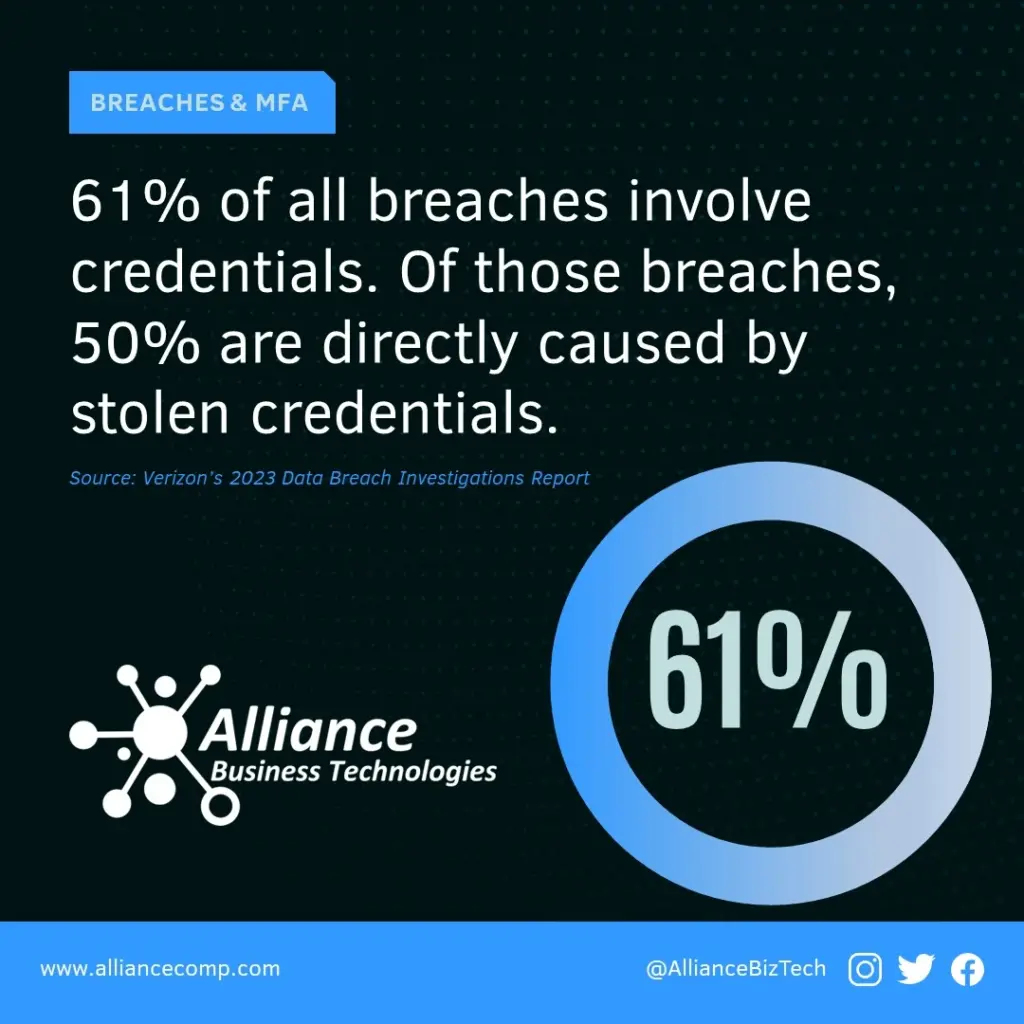What is Multi-Factor Authentication (MFA)?
MFA adds a layer of protection to your security by allowing access only after successful verification of two or more different categories. These may include:

• Something You Know: This is usually a password or PIN.
• Something You Have: This could be a mobile device, smart card, or security token.
• Something You Are: This refers to biometric factors such as fingerprint, retina scan, or facial or voice recognition.
By requiring multiple forms of authentication, MFA significantly enhances the security of our systems and data, making it exponentially harder for unauthorized individuals to gain access, even if they manage to obtain one of the authentication factors.
While we enable MFA on any devices that we monitor, we encourage you to enable it on your personal devices and programs as well.
Why is MFA Important in Cybersecurity?
Passwords are no longer sufficient protection against cyberattacks. And some regulatory bodies require it for their data protection regulations. We want to ensure compliance as well as reduced risk and increased protection.

5 Reasons to Use Multi-Factor Authentication:
- Reduces the risk of compromised passwords
- Assists with Cybersecurity Liability Insurance compliance
- MFA is compatible with Single Sign-On (SSO)
- Allows you to streamline the login process
- Provides a customizable security solution tailored to your needs
MFA Fatigue Attacks
MFA fatigue attacks, or MFA spamming is a cybercriminal’s continuous pushing of the second factor authentication request that targets your email or phone, hoping you eventually click “accept” in order to stop notifications
Staying Safe
MFA fatigue attacks typically occur when users have MFA configured with what is defined as “simple approvals.” Although simple approvals, such as only needing to click “accept” on a push notification can be a faster experience, experts recommend requiring more context for authenticating.
If you have any questions or concerns contact us: https://alliancecomp.com/contact-alliance-computers
For some statistics and other useful info about MFA: https://www.zippia.com/advice/mfa-statistics


Immigrant friend has another person’s email address as a security connection, it seems. It has not been a good relationship over the past 4 years. I think my friend’s ID may have been stolen. My friend has a wife and 5 kids and rent and other bills to pay. He only has an iPhone. How can he remove that person? Should he change email address and password? I only work with a desktop computer and don’t know anything about using an iPhone.